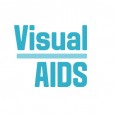Visual AIDS mourns the loss of Thomas Sokolowski (1950–2020), one of our four founders.
Tom served as the director of the Grey Art Gallery at NYU for many years before moving on to direct the Andy Warhol Museum and the Zimmerli Art Museum at Rutgers University.
In early 1988, Tom and three fellow arts professionals—Robert Atkins, Gary Garrels, and William Olander—wrote a letter to their colleagues inviting them to join Visual AIDS, a collective effort to “coordinate, encourage, and facilitate the presentation and discussion of AIDS-related art.”
Tom hosted the group’s first meeting at the Grey Art Gallery, in the context of a show he had curated, Rosalind Solomon: Portraits in the Time of AIDS, one of the first exhibitions of AIDS-related photography. He went on to play a central role in organizing Visual AIDS’ first major project, Day Without Art, coordinating 800 art museums, galleries, and non-profit spaces for a day of mourning and action in response to the AIDS crisis.
Tom used his encyclopedic knowledge of art history to situate art about AIDS in a long lineage of artists responding to crisis and plague, and to advocate for the political potential of art. In 1992 he curated From Media to Metaphor: Art About AIDS with Robert Atkins, one of the first touring museum exhibitions to address the subject. He served on Visual AIDS’ Board of Directors for many years before moving to Pittsburgh to work at the Andy Warhol Museum.
In remembrance of Tom’s steadfast commitment to the power of art, we are sharing an excerpt from the speech he gave during the Museum of Modern Art’s observance of the second Day Without Art in 1990:
Why are we here tonight? Standing within this great collection of masterpieces, frozen still in time, cosseted and closed off from reality, we seem far removed from the AIDS pandemic. The New York City death toll which, even as I speak, mounts to the catastrophic sum of 29,181 appears as a menacing specter whose shadow looms on the horizon… Do we not delude ourselves that art can actually save lives? A pill of AZT can save lives. A cheque written to the Community Research Initiative or Gay Men’s Health Crisis can save lives. A clean needle can save lives. Safer sex practices can save lives. Proper public education, fully-equipped health care facilities, sufficient health insurance, adequately sponsored research and drug testing should save lives, but shamefully, have not. In the face of civic, state, and federal bureaucracies which move either too slowly or not at all, one stands aghast in incredulous disbelief and with burning outrage…
Why, then, are we here tonight? I, like all of you here tonight, share the belief that art can and does effect change. It must do so. Art can bother people in a way that no other form of communication can… Art, when directed to social change, becomes a powerful manifestation of the human spirit to survive, rebel, commemorate, and most of all effect change. Art and artists, whether the message be sweet or acrid search for the truth; truth not in some absolutist notion, but rather truth that empowers…
This is why we have come here this evening. I look out at you tonight and see many of my fellow members of Visual AIDS, and feel an inordinate sense of pride and gratification… and hope. Hope even in the face of the AIDS pandemic. The many images produced and exhibited for Day Without Art are not expressions of guilt or penance, but rather of struggle and courage. This will continue. Tomorrow night, the skyline of New York City will darken for fifteen minutes in a mass performance piece called Night Without Light…. When the skyline darkens and then bursts once again into life-affirming light, I would like you to remember the words of performance artist Penny Arcade, who said, “Whenever I hear the name A Day Without Art, I think of a Day Without AIDS.” That is why we are here tonight.








Comments
Comments